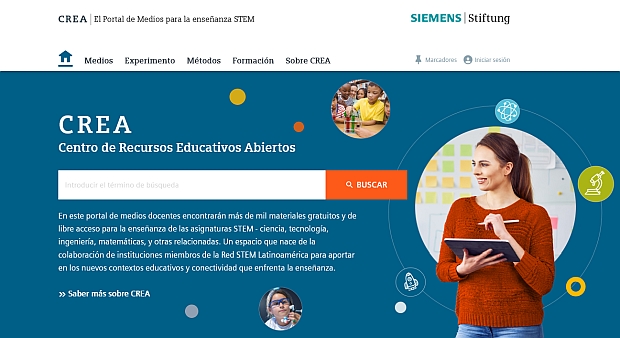6. Electricity – 6.3 LEDs (teacher instructions)
Text
Experimentation instructions:
Background information on the content and practical information on conducting the “LEDs" experiment.
Available in:
English
Type of media:
Text
Last update:
2022-10-24
License:

This medium is made available under a CC BY-SA 4.0 international license.
What does this mean?
How to reference this medium

This medium is made available under a CC BY-SA 4.0 international license.
What does this mean?
How to reference this medium
Media package:
Description:
The experiment provides students with the opportunity to learn about the light-emitting diode.
One item deals with „Technical application and vocational orientation“.
Information and ideas:
• Usually an LED cannot be supplied with exactly the right voltage. Therefore you need to use a ballast (or protective) resistor to limit the voltage and prevent the LED from burning out.
• In simplified terms, LEDs are like tiny light bulbs but require a lot less power to light up by comparison.
• The ballast resistor can be calculated using the following formula:
R (Ω) = (supply voltage – LED voltage drop) / I of LED (A)
For example, using a 6 V battery and green LED with a typical voltage drop of 2.6 V and a current of 20 mA (0.02): R = ( 6 V – 2.6 V/0.02 A = 170 Ω
One item deals with „Technical application and vocational orientation“.
Information and ideas:
• Usually an LED cannot be supplied with exactly the right voltage. Therefore you need to use a ballast (or protective) resistor to limit the voltage and prevent the LED from burning out.
• In simplified terms, LEDs are like tiny light bulbs but require a lot less power to light up by comparison.
• The ballast resistor can be calculated using the following formula:
R (Ω) = (supply voltage – LED voltage drop) / I of LED (A)
For example, using a 6 V battery and green LED with a typical voltage drop of 2.6 V and a current of 20 mA (0.02): R = ( 6 V – 2.6 V/0.02 A = 170 Ω
Related media:
Learning resource type:
Experiment
Subjects:
Physics; Technology
Grade levels:
Grade 7 to 9; Grade 10 to 13
School types:
Middle/high school; Vocational training
Keywords:
Electrical circuit; Electricity; Energy; Semiconductor
Bibliography:
Siemens Stiftung Media Portal
Author:
Dr. Ramon Leyendecker
Rights holder:
© Siemens Stiftung 2022



